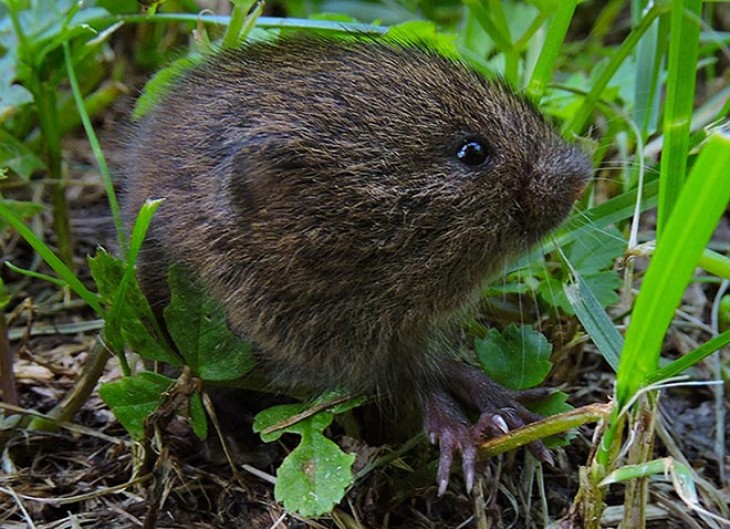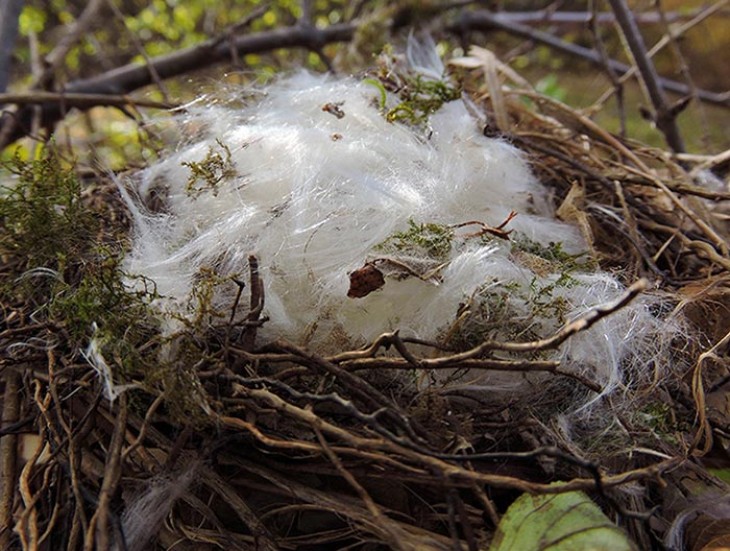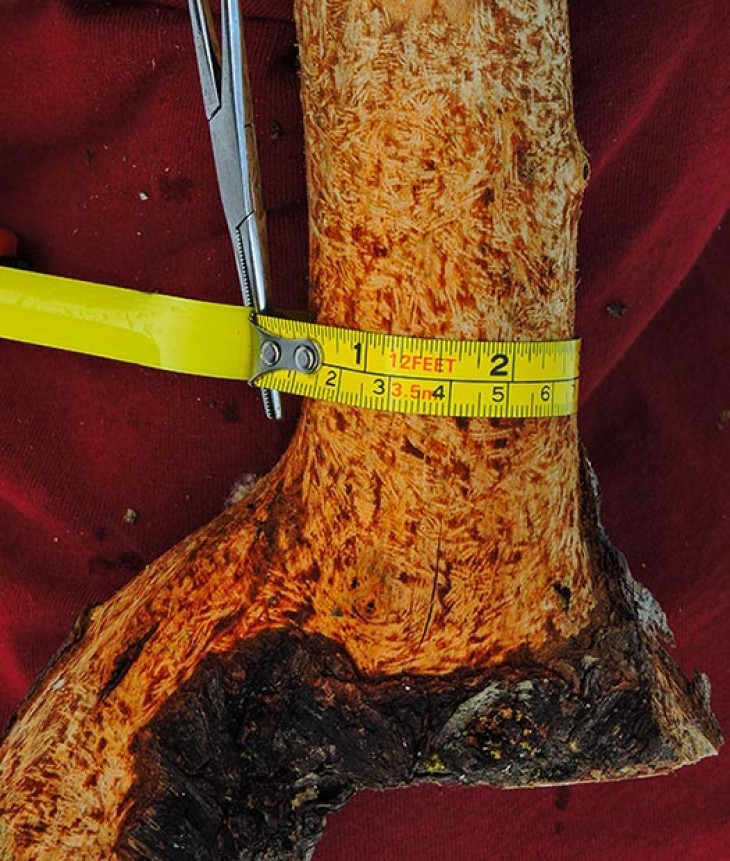On winter outings in snow, we often see the minute trotting tracks of meadow voles and the bounding track-sets of white-footed mice and deer mice. Weighing just one or two ounces, the wee beasties are nevertheless active in the deepest snow and cold. By late April, the land is released from winter’s frozen grip and the sun’s warmth begets Lilliputian forests of grasses, sedges, and forbs. Early spring’s melting snowpack uncovers evidence of previous seasons’ foraging and nesting activities. Recalling an image from Edgar Allan Poe’s short story The Purloined Letter, mice and voles are “hidden in plain sight,” and their cryptic habits and habitats are a blast to discover.
Meadow jumping mouse, Zapus hudsonius. The forest floor in April features tiny mice and vole “digs” – small holes and patches of ground where duff and soil have been scratched aside. Such excavations show where these mammals have dug up various species of hypogeneous (underground) fungi, including truffles, false truffles, and endogone species.
White-footed mice took winter residence in the walls of my deer camp. While there were no drawers in which to find mouse scat mementos, I did find messy evidence of acorn and beechnut feasts, and this nibbled cork that had been retrieved from a trash can. Could my wee whiskered guests have imbibed a bit of our fine single malt from this scotch-saturated cork?
This tiny front foot track of a deer mouse shows the characteristic bulbous toe impressions, with a faint vestigial thumb toe impression as marked. The knobby palm pads coalesce into a single three-part palm impression. At the bottom of the track, look for two circular marks created by the proximal pads. Mice typically bound, leaving track-sets of all four feet registering together. Two larger hind feet, each with five distinct toe impressions, overstep and land in front of the diagonal placement of the smaller front feet.
Meadow vole, Microtus pennsylvanicus. In spring, look for raised ridges of dirt that mark the vole’s winter runways. Voles are more tidy than mice. Their fecal wastes are neatly piled in little mounds, unlike the droppings of mice that are deposited everywhere. During the growing season, piles of two-inch-long clipped vegetation accumulate where voles have methodically cut tall stems piece by piece in order to access the plants’ uppermost seeds, fruits, and digestible leaves. Look for ball-shaped nests tucked up against the sheltering mass of a log, underneath piled lumber, within the protective structure of a grass tussock, or frequently in nesting boxes that we provide for birds.
A white-footed mouse created a well-insulated nest inside what is likely an abandoned gray catbird nest. Common milkweed down covers the nest, insulating and concealing its tiny rodent occupants. White-footed mice are semi-arboreal. They use their long tails as props, and for counterbalancing while nimbly negotiating lofty tree branches. Huge caches of seeds and nuts have been found in tree cavities. The late William Hamilton, zoologist and small mammal expert, discovered two gallons of beech nuts stored 30 feet high in a large American beech cavity.
This black cherry branch shows extensive tiny incisor marks – evidence of vole bark feeding. Wild and cultivated fruit trees, as well as other trees and shrubs, may be killed if bark removal completely encircles the stem. This damage is most prevalent during winters when vole populations are high, foods are less abundant, and the snow pack is deep.







